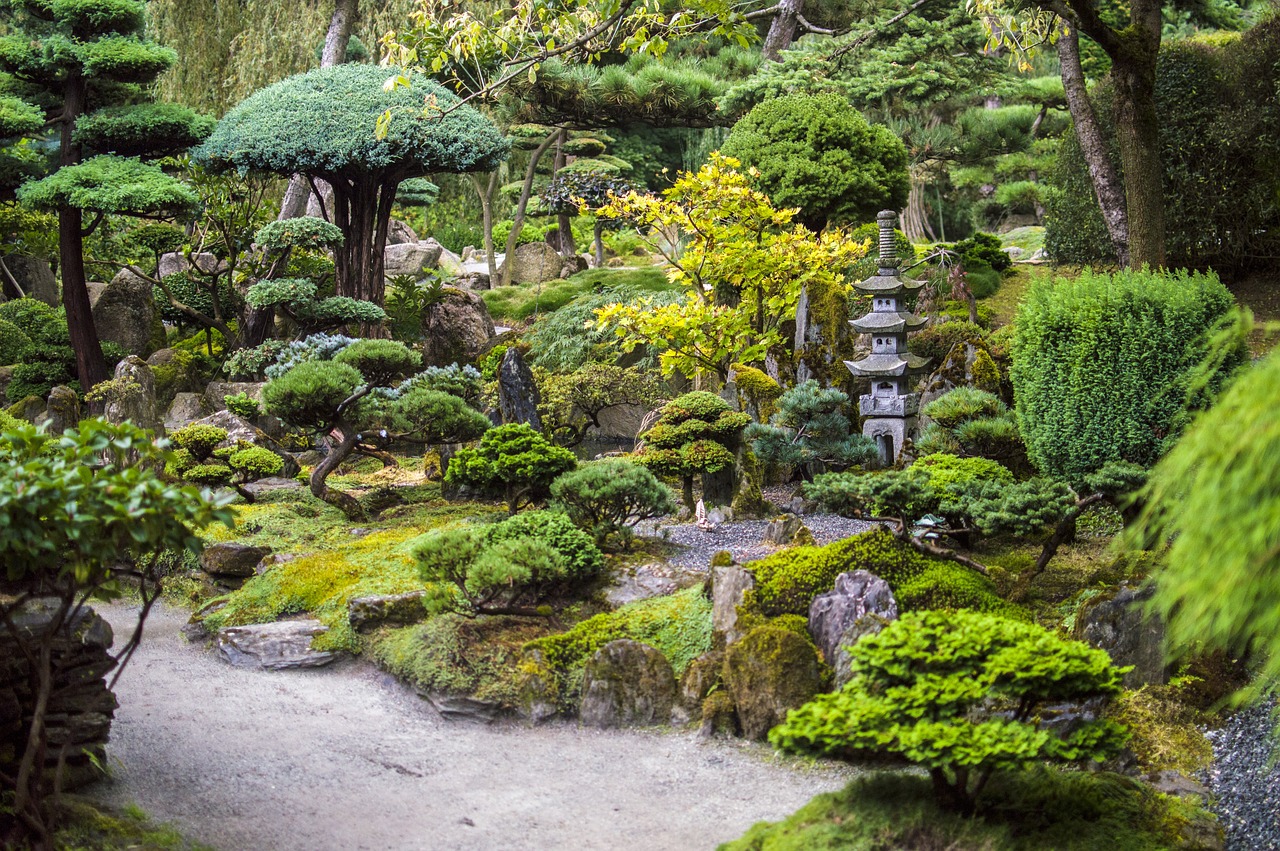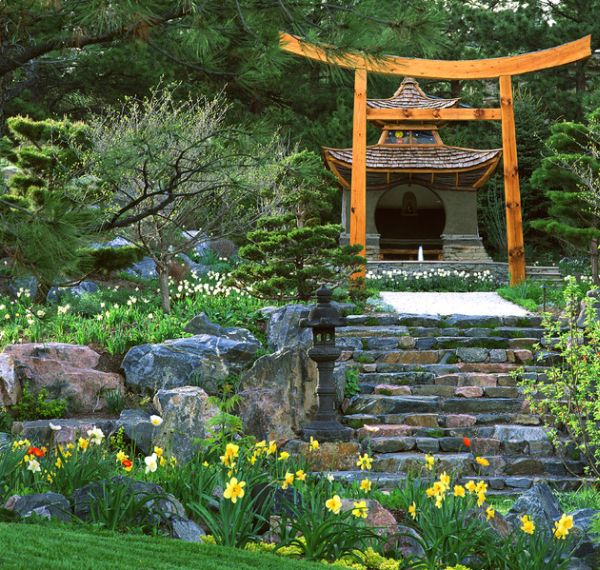Japanese gardens are more than mere landscaping; they are a reflection of art, philosophy, and nature’s tranquility. As someone who has spent countless hours cultivating my own slice of Japan in my backyard, I can attest to the profound peace that comes from thoughtfully designing a Japanese garden. In this comprehensive guide, we will delve into the essentials of Japanese garden decoration, including the fundamental elements, personal insights, and expert tips that can help you create your tranquil haven.
Understanding the Essence of Japanese Gardens
Before we dive into the decorative elements, it’s essential to understand what makes Japanese gardens unique. These gardens are deeply rooted in Buddhist and Shinto philosophies, which prioritize harmony with nature. They often feature asymmetrical designs, incorporating natural materials and elements meant to evoke the feeling of a natural landscape.
The Importance of Balance and Harmony
Balance and harmony are central to the design of a Japanese garden. From the arrangement of stones to the placement of plants, each element is chosen and positioned to create a peaceful, contemplative environment.
Common Elements of Japanese Gardens
- Water: Symbolizing purity and tranquility, water features such as ponds, streams, or waterfalls are common.
- Rocks and Gravel: These represent mountains and islands, providing texture and structure to the garden.
- Plants: Carefully selected flora enhances the garden’s beauty while promoting a sense of peace.
- Pathways: Winding paths invite exploration and contemplation.
- Bridges and Lanterns: Architectural elements connect different areas and add aesthetic appeal.
Key Elements of Japanese Garden Decoration
Now, let’s explore each element in-depth, discussing how to incorporate them into your garden.

1. Water Features
Water is essential in Japanese gardens. It symbolizes life and purity. Here are some popular types of water features:
| Type of Water Feature | Description | Pros | Cons |
|---|---|---|---|
| Pond | A still body of water, often with koi fish. | Attractive; supports wildlife. | Requires maintenance; can attract pests. |
| Stream | A flowing water feature that mimics natural rivers. | Soothing sound; adds movement. | Can be complex to design and maintain. |
| Waterfall | A cascading water element that creates a focal point. | Visually stunning; creates sound. | Requires a pump and maintenance. |

Personal Experience with Water Features
In my garden, I installed a small pond lined with stones and surrounded by Japanese irises. The tranquil sound of water gently splashing is incredibly calming, offering a peaceful retreat after a long day. When choosing your water feature, consider the maintenance level you’re comfortable with, as this can significantly impact your enjoyment of the space.
2. Rocks and Gravel
Rocks and gravel play a vital role in Japanese gardens. They provide structure and represent natural landscapes. Here are some ideas:

Using Rocks Effectively
Select rocks of varying sizes and shapes for visual interest. Larger stones can symbolize mountains, while smaller ones can mimic riverbeds. Using gravel for pathways or as a ground cover adds texture and helps in drainage.
Pros and Cons of Rock Features
- Pros: Durable, low maintenance, and can last for years.
- Cons: Can be difficult to move; may not provide the lush look some desire.

3. Plant Selection
The choice of plants is crucial in creating an authentic Japanese garden. Here are some popular plants:
- Maple Trees: Known for their stunning fall colors.
- Bamboo: Adds height and movement.
- Azaleas: Provide vibrant color during blooming season.
- Cherry Blossoms: Symbolic of beauty and transience.

Personal Planting Tips
When selecting plants, consider their seasonal changes and the colors they bring. I planted Japanese maples and cherry blossoms in my garden, which not only provide shade but also create a breathtaking spectacle during the spring. Ensure you select plants that thrive in your climate zone for the best results.
4. Pathways
Pathways guide visitors through the garden while promoting contemplation. Materials for pathways can include:

| Material | Description | Pros | Cons |
|---|---|---|---|
| Stepping Stones | Larger stone slabs placed strategically. | Natural look; defines pathways. | Can shift over time; may require adjustment. |
| Gravel | Loose stones spread over the ground. | Flexible design; good drainage. | Can scatter; may require replenishing. |
| Pavers | Concrete or stone blocks arranged in patterns. | Durable; various design options. | Higher installation cost; less natural feel. |
Creating the Perfect Pathway
I opted for a mix of stepping stones and gravel in my garden, creating a natural yet defined path that invites exploration. The sound of gravel crunching underfoot adds to the sensory experience.
5. Bridges and Lanterns
Bridges and lanterns enhance the aesthetic and functional elements of Japanese gardens.
Types of Bridges
- Arched Bridges: Commonly made of wood, providing a traditional look.
- Flat Bridges: Simple and elegant, often used to cross water features.
Choosing Lanterns
Japanese lanterns can be made from stone, wood, or metal and can serve as focal points or illuminate pathways. I added a few stone lanterns in my garden, which look beautiful at night when lit.
Tips for Designing Your Japanese Garden
Creating a Japanese garden requires careful planning and consideration of various factors. Here are some tips to guide you:
1. Choose the Right Location
Look for a quiet space with minimal disturbance. Ideally, your garden should be a private retreat that feels separate from the outside world.
2. Embrace Simplicity
Less is often more in Japanese design. Opt for a few carefully selected elements instead of overcrowding the space.
3. Integrate Natural Elements
Use natural materials like wood, stone, and plants to maintain an organic feel. Avoid synthetic materials that may disrupt the tranquil aesthetic.
4. Consider Seasonal Changes
Design your garden with seasonal interest in mind. Planting perennials that bloom at different times can ensure your garden looks beautiful year-round.
Maintaining Your Japanese Garden
Maintenance is crucial for preserving the beauty of your garden. Here are some tips:
Regular Pruning
Keep plants well-groomed to maintain their shape and promote healthy growth.
Cleaning Water Features
Regularly clean ponds and water features to prevent algae build-up and maintain a healthy ecosystem.
Weeding and Mulching
Remove weeds and apply mulch to help retain moisture and suppress unwanted growth.
Seasonal Adjustments
Be prepared to change your gardening techniques based on the seasons. For example, in winter, cover sensitive plants to protect them from frost.
Common Questions About Japanese Garden Decoration
What are the most popular plants for a Japanese garden?
Common plants include Japanese maples, cherry blossoms, azaleas, and bamboo, each contributing to the garden’s beauty and atmosphere.
How can I create a peaceful atmosphere in my Japanese garden?
Focus on balance, harmony, and simplicity. Incorporate water features and plants that promote tranquility, and ensure the layout encourages reflection and meditation.
Do I need special tools for Japanese garden maintenance?
Basic gardening tools such as pruners, rakes, and shovels should suffice. Consider investing in specialty tools like a hori-hori knife for precise weeding and planting.
What is the best time to design and plant a Japanese garden?
Spring and fall are ideal times for planting and designing, as the moderate temperatures promote healthy growth.
Conclusion: Your Journey to Creating a Japanese Garden
Designing a Japanese garden is a fulfilling journey that allows you to cultivate beauty, peace, and harmony in your space. By incorporating essential elements like water features, rocks, and carefully selected plants, you can create a serene oasis that reflects the tranquility of nature. Remember to maintain balance and simplicity, ensuring your garden remains a peaceful retreat for years to come.
Embark on this journey with an open heart and mind, and you may discover that your Japanese garden is not just a place of beauty, but a source of profound personal reflection and calm.